The Titleist AVX and the TaylorMade TP5x are some of the best low-spin golf balls available. These balls offer reduced spin for golfers seeking distance and accuracy off the tee.
Golfers seeking top performance often choose the best low-spin golf balls to enhance their distance and control on the course. The Titleist AVX stands out with its innovative core and casing layer, designed to reduce spin while maintaining a soft feel.
Meanwhile, the TaylorMade TP5x impresses with a 5-layer construction that enhances speed without sacrificing control. These best low-spin golf balls help golfers lower spin rates on long drives, leading to straighter shots and better performance in windy conditions. Players at every level can refine their game by choosing the right low-spin golf ball, which is crucial for shooting lower scores and achieving greater satisfaction on the course.
Introduction To Low Spin Golf Balls
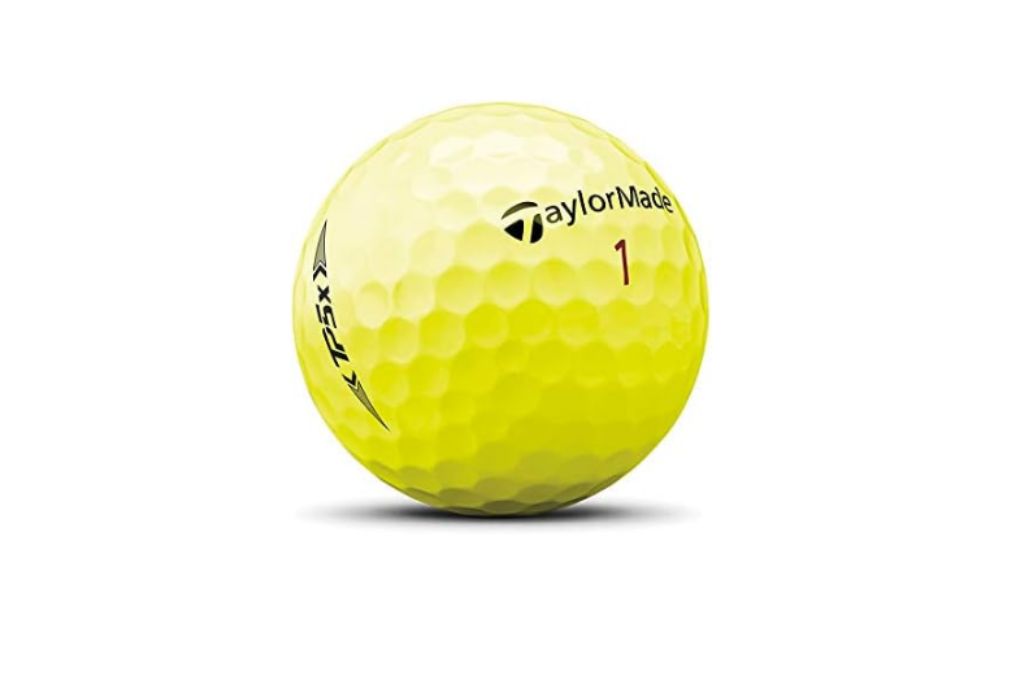
Golf balls come in many types, each tailored for different playing styles. Best low-spin golf balls are a unique breed, suited for golfers looking to reduce spin-off the tee. They help straighten ball flight and enhance distance for an impressive game. Whether new to golf or experienced, understanding these balls’ features can significantly improve your play.
Characteristics of Best Low-spin Golf Balls
- Dimple Pattern: Specially designed to decrease air resistance.
- Construction: Typically multi-layered for optimal performance.
- Core: A sturdy core that focuses on reducing spin.
- Cover Material: Durable urethane or ionomer covers are common.
These features work together to limit the spin, leading to longer, straighter drives.
Benefits For Golfers
| Benefit | Description |
| Improved Distance | Less spin equals longer shots. |
| Better Accuracy | Reduces the chances of hooks and slices. |
| Enhanced Control | Stable flight in windy conditions. |
| Versatility | Suitable for various skill levels. |
Selecting the best low-spin golf balls can make a significant difference in your performance. Low-spin golf balls are an excellent choice for achieving greater distances and improved precision.
The Science Behind Spin And Performance
Understanding the science of spin in golf is crucial for players seeking to improve their game. Spin affects the ball’s flight and control, making it an essential element in a golfer’s strategy. Let’s delve into the intricacies of how best low-spin golf balls can enhance performance on the course.
Dynamics Of Ball Spin
A golf ball spins after the club strikes it. Several factors contribute to this:
- Clubhead speed: Faster swings impart more spin.
- The angle of contact: The club’s loft angle influences spin rates.
- Ball construction: Layers and materials affect spin characteristics.
Manufacturers design the best low-spin golf balls with a specific construction. Their cores are typically firmer, reducing spin and increasing distance.
Impact On Distance And Control
Spin has a dual effect on a golf ball’s behavior:
| Aspect | Lower Spin | Higher Spin |
| Distance | Increases rollout | Reduces rollout |
| Control | Lesser curvature | Greater stopping power |
Choosing the best low-spin golf balls can lead to longer drives and more distance. These balls are best suited for players with high swing speeds looking for stable flight and roll.
Top Low Spin Golf Balls In The Market
Are you aiming to reduce spin and improve your distance off the tee? Best low-spin golf balls are the secret weapon many golfers use to gain those extra yards and enjoy a better roll upon landing. The market offers a wealth of options to suit every skill level and budget. Let’s explore some of the leading golf balls known for their low-spin characteristics.
Premium Options
For those who want top-tier performance, the premium segment offers advanced technology and superior quality. Brands like Titleist, Callaway, and TaylorMade lead the pack with balls designed for serious golfers.
- Titleist Pro V1: Boasts a urethane elastomer cover for control.
- Callaway Chrome Soft X: Features Dual SoftFast Core for high launch.
- TaylorMade TP5x: Offers a 5-layer construction for precision.
Golfers often notice a difference in their game when they switch to these best low-spin golf balls. The investment pays off in enhanced performance and a noticeable reduction in spin.
Budget-friendly Choices
High quality doesn’t always mean high cost. Many affordable golf balls still provide excellent low-spin characteristics.
- Srixon AD333: A balanced option for durability and performance.
- Wilson Staff Duo Soft+: Known for its soft feel at a lower price point.
- Callaway Warbird: Delivers distance without breaking the bank.
These balls are perfect for golfers looking to improve their game without the premium price. They provide the necessary features to keep the ball flying straight and the spin low.
| Ball Model | Spin Characteristics | Price Category |
| Titleist Pro V1 | Low long-game spin, high short-game control | Premium |
| Srixon AD333 | Low to mid-spin levels | Budget |
Comparing Brands And Models
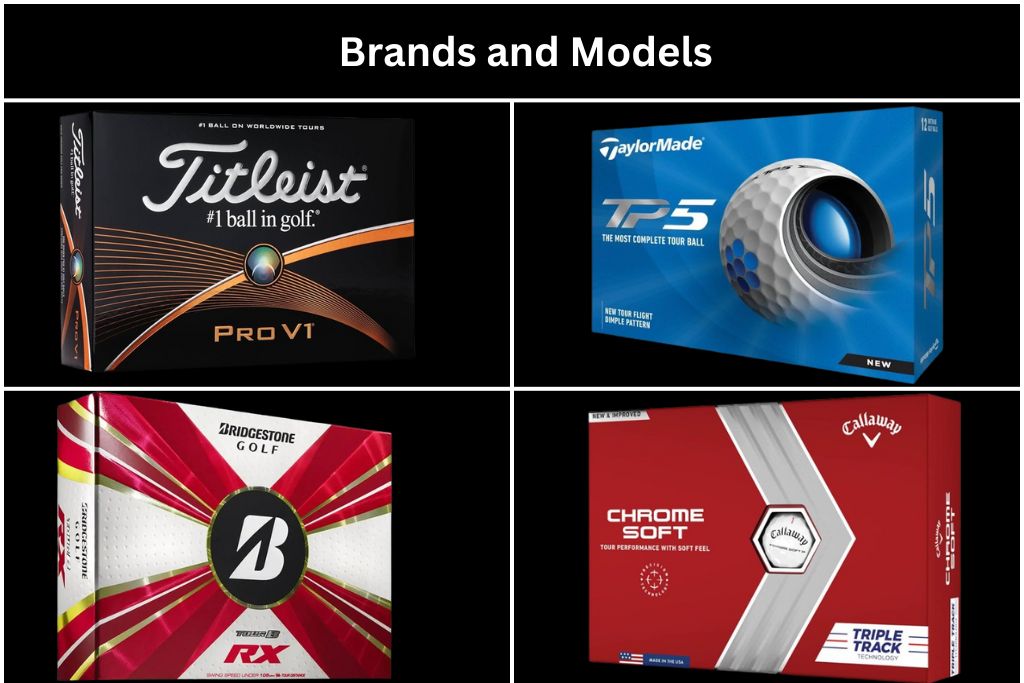
Let’s dive into the world of best low-spin golf balls and see how different brands and models stand up against one another. Gain insights on top manufacturers and rising stars to find the perfect golf ball for your game.
Major Manufacturers
Golfing enthusiasts know that the right best low-spin golf balls can make all the difference. Leading brands have mastered the art of low-spin technology. Look at what they have to offer.
- Titleist Pro V1x: A go-to for golfers seeking distance with a consistent flight.
- Callaway Chrome Soft X: This ball is perfect for a workable flight and pinpoint greenside control.
- TaylorMade TP5x: It stands out for its speed and low drag performance.
- Bridgestone Tour B XS: Tiger Woods favors this ball for its soft feel and total control.
| Brand | Model | Core | Cover | Spin |
| Titleist | Pro V1x | Dual | Urethane Elastomer | Low |
| Callaway | Chrome Soft X | Graphene-infused Dual SoftFast Core | Urethane | Low |
| TaylorMade | TP5x | 5-layer | Soft-Tough Cover | Low |
| Bridgestone | Tour B XS | Gradational Core | Urethane | Low |
Emerging Brands
Exciting new players are rising in the golf ball industry. These brands bring innovative designs to the table.
- Vice Pro Plus: Known for its energy transfer and long carry.
- Snell MTB X: Balances distance with a piercing flight.
- Kirkland Signature (Costco): Offers solid performance at a great value.
- Seed SD-01 The Pro: Delivers premium features without breaking the bank.
Each brand brings a unique edge. They aim for optimal performance at unbeatable price points. Try them on the course and notice the difference yourself!
Table of Contents
Materials And Construction
To find the best low-spin golf balls, understand the materials and construction techniques used. Golf ball designers employ advanced technology to reduce spin while maintaining control and feel. Let’s delve into what makes these low-spin wonders tick.
Core Materials
At the heart of every golf ball is the core. This critical component defines the ball’s compression and the initial velocity upon impact. Distinct materials are in play:
- Rubber: Often used for its elasticity and durability.
- Acrylate or resin blends: Enhance the speed for players with faster swing speeds.
- Titanium compounds: Infuse the core with strength, affecting spin rates.
The core’s composition aims to reduce backspin and optimize the distance for golfers striving for longer drives.
Differences In Cover Types
Manufacturers do not create all covers equally. The cover of the best low-spin golf balls is crucial as it interacts directly with the clubface. Two main types are:
| Cover Type | Characteristics | Performance |
| Surlyn® | Durable, resistant to cuts | Lower spin, more roll |
| Urethane | Soft feel, high control | Slightly higher spin than Surlyn® but with an enhanced feel |
Choosing the right cover depends on your skill level and the type of performance you seek from your best low-spin golf balls.
Aerodynamics And Dimples
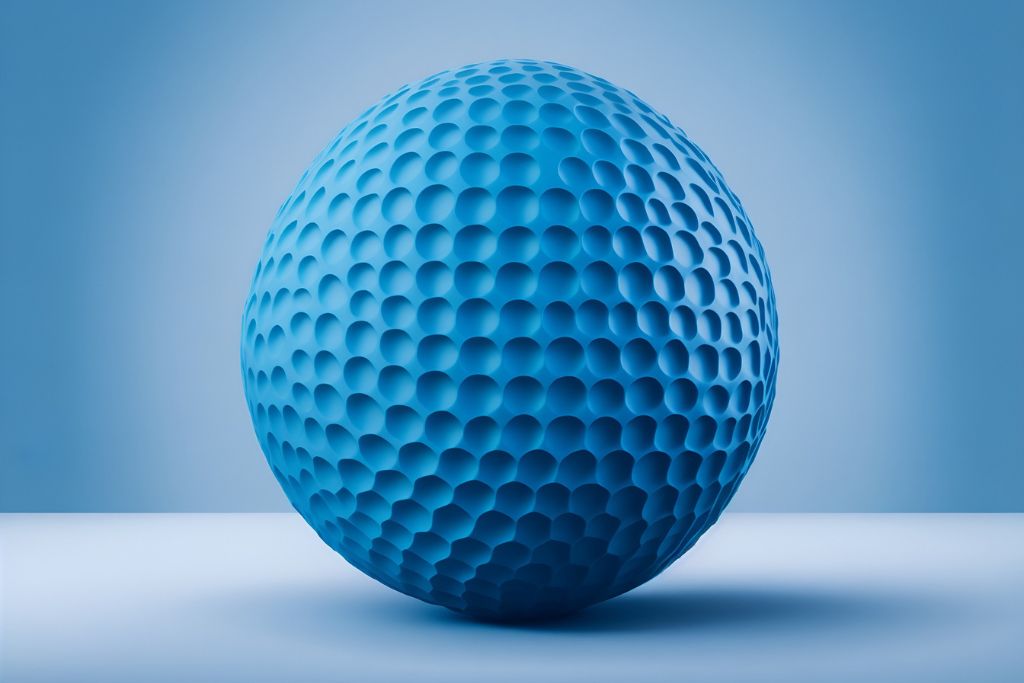
Imagine throwing a smooth stone versus a rough one across a pond. What happens? The smooth stone skips further, right? Well, in golf, the science of aerodynamics and the pattern of dimples on a golf ball do something similar for your drive.
They combine to cut through the air, giving you those extra yards with a low spin ball. Let’s dive into how these little features of the best low-spin golf balls make a significant impact on your game.
Design Considerations
Designing the best low-spin golf balls isn’t just about making a tough center or a soft cover. The surface’s dimples are crucial too. They help the ball stay stable as it flies through the air.
Think of dimples as tiny air guides. They make the airflow stick to the ball better, reducing drag and helping the ball fly straight and far.
- Uniform Dimple Pattern: Ensures consistent flight.
- Shallower Dimples: Can reduce spin and improve distance.
- Optimized Dimple Size: Balances air resistance and lift.
Effects On Flight Path
Dimples work like magic on your golf ball flight. When you strike the ball, it spins. The backspin can lift the ball into the air.
Too much spin and the ball might rise too high and fall short. Not enough, and it won’t lift enough to cover the distance.
The right dimple design on a low spin ball gives the ball a stable, piercing flight, especially in windy conditions.
Less Drag: Dimples reduce air resistance, so the ball can slice through the wind.
Controlled Lift: They also create lift without too much spin, so the ball stays on a stable path.
Understanding the role dimples play can transform your game. Choose the right best low-spin golf balls with the right aerodynamics, and watch your drives stay on target, even in the toughest conditions.
Professional Endorsements And Reviews
Professional endorsements and reviews play a vital role in a golfer’s decision-making process. They help golfers understand the value of different golf balls. Specifically, the best low-spin golf balls receive much attention for their performance and quality. Specific preferences of top professional golfers often guide amateurs and hobbyists toward making the best choice for their game.
Tour Player Preferences
Tour professionals hit the ball with incredible speed and precision.
Their choices in golf equipment, including the best low-spin golf balls that provide lower spin, can tell us a lot. We see these preferences in the brands and models they use during tournaments. The balls that tour players prefer often have a blend of distance, control, and feel that suits their high-level game.
- Titleist Pro V1 is a frequent choice for its exceptional control.
- Bridgestone Tour B X garners attention for its reduced spin off the tee.
- Golfers praise the TaylorMade TP5x for its balance of low spin and high launch.
Experts’ Opinions
Golf experts take various factors into account. They carefully review products to provide in-depth insights. They look at compression, cover material, and dimple patterns.
Experts help demystify the technical specs. They translate them into practical advice. This helps golfers at any skill level pick the best low-spin balls for their game.
Based on recent analyses, here’s a quick breakdown from expert reviews:
| Golf Ball | Expert Rating | Key Benefit |
| Callaway Chrome Soft X | 4.7/5 | High launch and control |
| Srixon Z-Star | 4.6/5 | Great greenside spin regulation |
| Wilson Staff Model | 4.5/5 | Exceptional distance with low spin |
Favorable feedback from experts influences enthusiasts to experiment with these advanced golf balls. Their reviews often reveal the best in class for competitive play and personal improvement.
Player Skill Level And Ball Selection
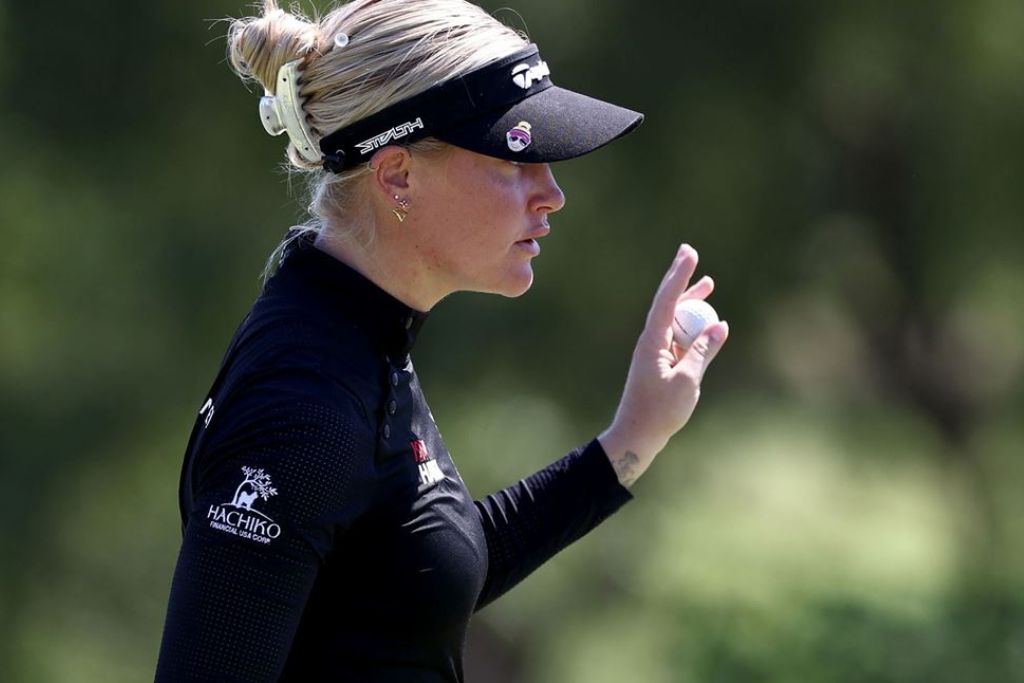
Selecting the best low-spin golf balls can elevate a player’s game significantly. They are ideal for golfers aiming to reduce hook or slice and enhance distance control. Tailoring ball choice to skill level can yield remarkable improvements on the course.
Choosing the right golf ball is a game-changer. Golfers with different skill levels benefit from specific ball types. Best low-spin golf balls aid in control and distance. Let’s dig into what ball suits which player.
Choosing For Beginners
New golfers need to focus on simple choices. Complex features are less significant than mastering basics.
- Seek balls that promote straight shots.
- Opt for those that offer good distance and durability.
- Don’t stress over spin yet; aim for consistent contact.
Considerations For Advanced Players
Experienced golfers require balls that complement their skills.
- Choose the best low-spin golf balls for better control in the wind.
- Consider a soft feel around the greens.
- Assess your swing speed to match the ball’s compression rating.
Remember, the right ball can lower scores and enhance play.
Environmental Factors Affecting Ball Performance
Understanding how the environment affects ball performance is crucial for golfers. The best low-spin golf balls can travel farther and straighter. Yet, environmental factors can influence its journey.
Weather conditions and course terrain play a significant role. This section explores how these elements impact golf ball dynamics.
Weather Conditions
Weather shapes the way a golf ball behaves in flight. Consider these key points:
- Wind: Strong gusts can sway a ball, affecting its path.
- Humidity: Damp air can decrease ball travel distance.
- Temperature: Cold air is denser, possibly shortening flight.
To counteract these effects, select the best low-spin golf balls that promise stability and control, even in unpredictable weather.
Course Types And Terrain
The course’s landscape can also alter ball performance.
| Terrain Type | Impact on Ball |
| Soft fairways: | Increases spin, decreases roll. |
| Hard greens: | Causes less spin, and more bounce and roll. |
| Uneven lies: | Affects launch angle and spin rates. |
Depending on the course, the best low-spin golf balls can help maintain control and maximize distance, on various terrains.
Compression Rate And Its Effect
Golf enthusiasts pay close attention to the compression rate of golf balls. Compression affects how a ball reacts off the clubface. Lower compression means more deformity at impact.
This leads to a lower spin rate, essential for golfers aiming for distance and precision. Let’s dive deeper into compression and swing speed matching.
Understanding Compression
Compression in golf balls signifies their hardness. A lower number indicates a softer ball. Recommend softballs for players with slower swing speeds.
They compress more easily, which helps to maximize distance even with a slower swing. High-compression balls suit players with faster swings, offering better control.
Matching Compression To Swing Speed
Selecting the right compression based on your swing speed is crucial. Here are key points for matching your speed to the ball:
- Low Swing Speed: Under 85 mph requires low compression.
- Medium Swing Speed: Between 85-104 mph works best with medium compression.
- High Swing Speed: Over 105 mph benefits from high compression balls.
Match your golf ball correctly, and enjoy improved distance and accuracy.
Optimizing Low Spin For Maximum Distance

Chasing after that elusive extra yard on the golf course? Understanding and optimizing the low spin of your best low-spin golf balls can lead to maximized distance off the tee.
Golfers in pursuit of the perfect drive often overlook the importance of spin rates. Yet, these rates are vital for achieving those extra yards. Embrace the art of the best low-spin golf balls for a game-changing performance!
Techniques And Tips
Mastering ball spin is key for any golfer looking to add distance to their drives. To optimize low spin, gear, and form align perfectly.
- Choose the Right Equipment: Pick balls specially designed for low spin. Combine them with drivers that have the right loft and stiffness.
- Adjust Your Swing: Keep a steady head, and a smooth tempo, and strike the ball with a square clubface.
- Practice Your Technique: It’s not just about the balls. Work on a consistent swing path and ball contact.
- Analyze and Adjust: Use technology like launch monitors to understand spin rates, then tweak as necessary.
When To Use the best low-spin golf balls
Knowing when to take advantage of low-spinning golf balls can transform your game. These balls work best under certain conditions.
- Dry and Hard Courses: When the fairway is firm, low spin helps the ball roll further.
- Windy Conditions: Reduce the ball’s flight deviation and cut through the wind easily.
- High Swing Speed Players: If your swing is fast, the best low-spin golf balls help prevent ballooning trajectories.
Control And Accuracy With Low Spin Balls
Control and Accuracy with Low Spin Golf Balls
The right low-spin golf ball can change your game, especially when it comes to control and accuracy. Specially designed best low-spin golf balls reduce spin off the tee, leading to straighter and longer drives. For golfers who seek to improve their control and precision, these balls are a game-changer.
Approach Shots
Better control over approach shots is crucial. These balls reduce sidespin, which often leads to balls veering off course. Result? Shots fly straight, right at the target.
| Benefits of Low Spin Golf Balls on Approach |
| – Straighter trajectory |
| – Enhanced control |
| – Minimized sidespin |
| – Consistent landing |
Putting And Short Game
Touch and precision dictate the short game. Best low-spin golf balls offer a firmer feel, aiding in consistent roll and better distance control on the greens. Your putts will be more accurate, with fewer jumps and skids.
- Improved roll on greens
- Firmer feel for better feedback
- Stable flight for chip shots
How To Test And Choose Your Ideal Ball
Discovering the perfect golf ball can transform your game. Golfers prize lower-spin golf balls for their ability to enhance distance and provide a stable flight. This guide takes you through a practical approach to test and choose the best low-spin golf balls that elevate your game to the next level. Let’s dive into field testing and shot data analysis.
Field Testing
Hit the links with a purpose. Gathering real-world data is critical in selecting the best low-spin golf balls. Start your testing by hitting each ball in various conditions.
Pay attention to the feel off the tee and through the irons. Notice the ball’s response on greenside chips and putts. Make notes on these key observations:
- Flight trajectory
- Distance off the tee
- Grip on the putting surface
Compare your experiences with each ball under similar conditions to achieve accurate results. A pro tip: partner with a golfing buddy for blind testing to ensure unbiased feedback.
Analyzing Shot Data
After field testing, dive into the data. Use a portable launch monitor or a professional fitting center to gather shot statistics. Look for these crucial metrics:
| Stat | Low Spin Ideal |
| Spin Rate (RPM) | < 3000 |
| Launch Angle | 10° – 15° |
| Carry Distance | Maximized |
The goal is a low spin rate that still allows control around the greens. Combine shot data with the on-course feel. This combination helps pinpoint the best low-spin golf balls tailored to your style of play.
Remember: Technology is your friend. Use it to fine-tune equipment choices, leading to better performance and more enjoyable rounds.
Innovations And Tech Advancements
Golf is more than a game; it’s a quest for perfection. The quest never ends, and technology plays a vital role. Tech advancements in golf balls have been game-changers.
Best low-spin golf balls have transformed many golfers’ games, thanks to their cutting-edge design. We’re diving into the most recent breakthroughs that are shaping the future of golf balls.
Recent Breakthroughs
The world of best low-spin golf balls is buzzing with innovation. Key breakthroughs include:
- Aerodynamic Design: Improved dimple patterns reduce drag, enhancing distance and accuracy.
- Enhanced Core: New core materials increase velocity while maintaining a low spin.
- Urethane Covers: Thinner, more durable covers offer better control and feel.
| Feature | Advantage |
| Gradient Core Tech | Consistent flight and performance across various swing speeds. |
| Temperature Resistance | A play that is less affected by weather conditions. |
Manufacturers are not only refining existing designs but also introducing groundbreaking materials. Each change aims to maximize distance, durability, and control.
What’s Next In Ball Technology
The next wave of low-spin golf ball technology is around the corner. Expected innovations include:
- Smart technology integration for performance tracking.
- Nanotechnology for more precise control on a molecular level.
- Eco-friendly materials for sustainability in manufacturing.
These advancements promise to deliver balls that not only enhance player performance but also address environmental concerns. We can expect a future where our best low-spin golf balls are smarter, greener, and more tailored to our game.
Cost Vs. Performance
Choosing the right golf ball can make a big difference in your game. But often, golfers encounter a classic dilemma: should they invest in high-performance but more expensive golf balls, or should they choose budget-friendly options? Let’s look at how cost and performance play a role in selecting the best low-spin golf balls. Whether you are a seasoned pro or a beginner, striking the perfect balance between cost and performance is key.
Investing In Premium Balls
Premium golf balls boast the latest technology and highest-quality materials. They promise lower spin rates for those seeking precision and distance. With advanced aerodynamic designs, premium best low-spin golf balls offer consistent flight and better control. But these perks come with a higher price tag.
- Enhanced control of the green
- Durable construction
- Optimized performance for serious golfers
A table demonstrating the average cost range of premium best low-spin golf balls:
| Brand | Average Cost Per Ball |
| Titleist Pro V1 | $4 – $5 |
| Callaway Chrome Soft | $3 – $4 |
| TaylorMade TP5x | $4 – $5 |
These figures show that the best low-spin golf balls can be a significant investment, particularly for frequent players.
Value Of Affordable Models
Affordable best low-spin golf balls are an excellent option for those conscious of their budget. Cost-effective models still offer improved performance over standard golf balls. They are ideal for casual or infrequent players who want a blend of quality and cost.
- Competitive Pricing
- Good performance for the casual player
- Lower financial barrier to entry
Consider an example with affordable golf ball options:
| Brand | Average Cost Per Ball |
| Wilson Staff Duo Soft+ | $1 – $2 |
| Srixon Soft Feel | $1 – $2 |
These affordable options demonstrate savings on upfront costs without sacrificing all performance benefits.
The Role Of Personal Preference
Choosing the right golf ball greatly affects your game. Personal preference plays a huge role in picking the best low-spin golf balls. Your unique style and needs dictate which ball feels best on the green. Let’s explore how feel and visual elements can influence this choice.
Feel And Perception
The way a golf ball feels upon impact is crucial. It’s all about how the ball translates from club to distance. Some golfers prefer a soft feel, associating it with control and precision. Others might opt for a firmer touch, equating it with power and drive length.
- Soft feel: Ideal for finesse shots and short games.
- Firm feel: Associated with longer drives and tee shots.
Visual And Acoustic Preferences
The ball’s appearance can impact a golfer’s confidence. Color contrast and markings help with alignment and focus. A visually appealing ball can improve your game.
Acoustics also matters. The sound of the ball can confirm a good hit, which for many, is a critical part of the experience.
| Visual Aspect | Acoustic Feedback |
| Bright colors aid visibility | The ‘Click’ sound indicates a firm hit |
| Markings assist in alignment | The softer sound felt like a gentle hit |
Accessorizing For Low Spin Balls
Getting the right accessories enhances the performance of low-spin golf balls. Perfectly paired clubs and innovative gadgets can raise your game.
Complementary Golf Clubs
Choosing golf clubs that complement your low-spin balls is essential. The right clubs can boost distance and improve accuracy. Consider these options when accessorizing:
- Drivers with stiff shafts for more control.
- Woods and hybrids are designed to maximize distance.
- Wedges with the right bounce and groove design for cleaner strikes.
Gadgets And Tools
Golf gadgets and tools can tailor your experience with the best low-spin golf balls. Here’s a list of items to consider:
- Spin rate monitors to trackball performance.
- Swing analyzers for perfecting your technique.
- Golf simulators for practice and play analysis.
| Gadget | Benefit |
| Spin Rate Monitor | Measures ball spin for refinement. |
| Swing Analyzer | Improves swing technique. |
| Golf Simulator | Allows practice in any environment. |
Maintaining Performance Over Time
The secret to consistent swings on the golf course lies in the condition of your golf balls. Choosing the best low-spin golf balls elevates your game, but keeping them in prime shape is essential. Proper care and timely replacement ensure your game stays at its peak, no matter how often you hit the links.
Ball Care And Storage
Proper care starts with how you handle and store your golf balls. Here’s what you need to remember:
- Avoid extreme temperatures. Store balls in a moderate climate.
- Keep them clean. Wipe off mud or debris after each game.
- Do dry checks. Ensure they are dry before storing.
By following these steps, your low-spin golf balls will maintain their performance over many rounds.
Replacing Your Golf Balls
Even the best golf balls lose their luster with time. Regular inspection for cuts, scrapes, or loss of texture is vital. Here’s a simple guide to help you decide:
| Condition | Action |
| Minor scuffs | Keep for practice |
| Major abrasions | Replace immediately |
| Smooth texture | Time for a new set |
Ensure that wear and tear doesn’t affect low spin and accuracy by keeping a fresh set of balls. Understand your play frequency and replace balls accordingly to maintain top performance.
Myths And Misconceptions
Golf balls can greatly influence your game. Especially when it comes to choosing a golf ball with the right spin characteristics. Some players swear by low-spin golf balls, believing they unlock the door to a better game.
Myths and misconceptions surround these tiny dimpled spheres. Let’s clarify facts from fiction and understand the true capabilities of low-spin golf balls.
Debunking Common Myths
A number of myths cloud the truth about low-spin golf balls. Players think these balls significantly increase driving distance for everyone. Not always true.
Each golfer’s swing is unique, and these golf balls cater to specific needs. Below, find out the reality behind these commonly held beliefs.
- All players will see distance gains: Depending on your swing speed and technique.
- Only for professionals: Amateurs can also benefit, particularly if they have a faster swing speed.
- No difference in short game: The reduced spin can affect control around the greens.
Understanding Limitations
Knowing the limitations of the best low-spin golf balls is crucial. They aren’t a magic solution for all your golfing woes. Detailing limitations helps set realistic expectations.
| Aspect | Limitation |
| Spin Control | Limited action on greens and finesse shots. |
| Weather Conditions | May not perform well in windy conditions. |
| Swing Speed | Best suited for players with higher speeds. |
In reality, selecting the right golf ball aligns with your playing style. Test and evaluate different models. Practical experience outshines myths and hearsay.
Conclusion And Future Outlook
Exploring the best low-spin golf balls brings clarity to the game’s evolving needs. Let’s gaze into the future of these game-changers.
The Evolving Golf Ball Market
The golf ball market is shifting, with low-spin balls gaining traction. Advanced materials and aerodynamic designs are at the forefront. Players seek balls that offer control and distance. Brands compete fiercely, using cutting-edge technology to meet these demands.
Anticipated Trends
New trends will shape the future of golf balls. Expect even lower spin rates and more customization options. Players will enjoy balls tailored to their specific swing styles.
The environment will also influence trends, pushing for eco-friendly materials. With these advancements, golfers can aim for a greener game without compromising on performance.
| Future Trends in Low Spin Golf Balls | |
| Trend | Impact |
| Material Innovation | Better flight, less spin |
| Customization | Swing-specific design |
| Eco-initiatives | Sustainable play |
- Smart technology integration will enable personalized feedback on performance.
- Global market expansion, guided by increasing interest in golf.
- Expect a stronger focus on aerodynamics, for balls that fly farther with less spin.
Advancements will enhance accuracy and improve the playing experience. The journey towards perfecting the low-spin golf ball is ongoing. A thrilling future awaits both new and experienced golfers.
Frequently Asked Questions
Will A Low Spin Ball Help With A Slice?
A low-spin golf ball can reduce sidespin, potentially decreasing the severity of a slice.
What Is Titleist Low Spin Ball?
The Titleist low spin ball is a golf ball designed to reduce spin, optimize flight, and enhance distance off the tee.
What Ball Does Rory Mcilroy Use?
Rory McIlroy uses the TaylorMade TP5x golf ball. His choice reflects a preference for distance and control.
How Do I Make My Golf Ball Less Spin?
Choose a golf ball with low-spin characteristics. Reduce loft by selecting clubs like irons with a lower trajectory. Focus on a smoother swing with a gentler grip and less wrist action. Consult a golf professional to refine your technique.
Adjust your tee height lower for less backspin.
What Are Low Spin Golf Balls?
Low-spin golf balls reduce air rotation during flight, leading to longer distances and straighter shots, especially for high-handicap golfers.
Why Choose Low Spin Golf Balls?
Choosing low-spin golf balls helps in achieving greater distance and accuracy by minimizing the side spin which often causes hooks and slices.
Conclusion
Choosing the best low-spin golf balls can transform your game. Precision and control are within reach with these top picks. Embrace the fairway confidence they offer.
Remember, personal play style and preferences matter. Tee off towards improved performance and lower scores.
Swing by our selection, your perfect match awaits.

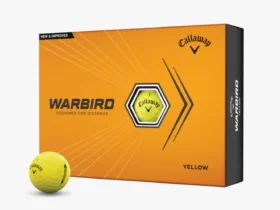
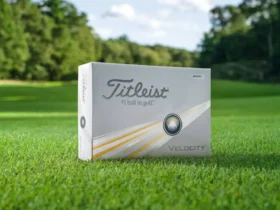
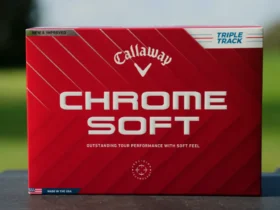
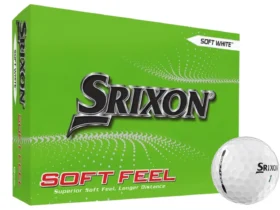
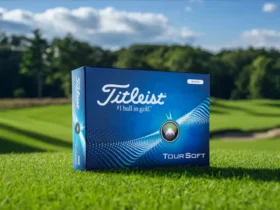
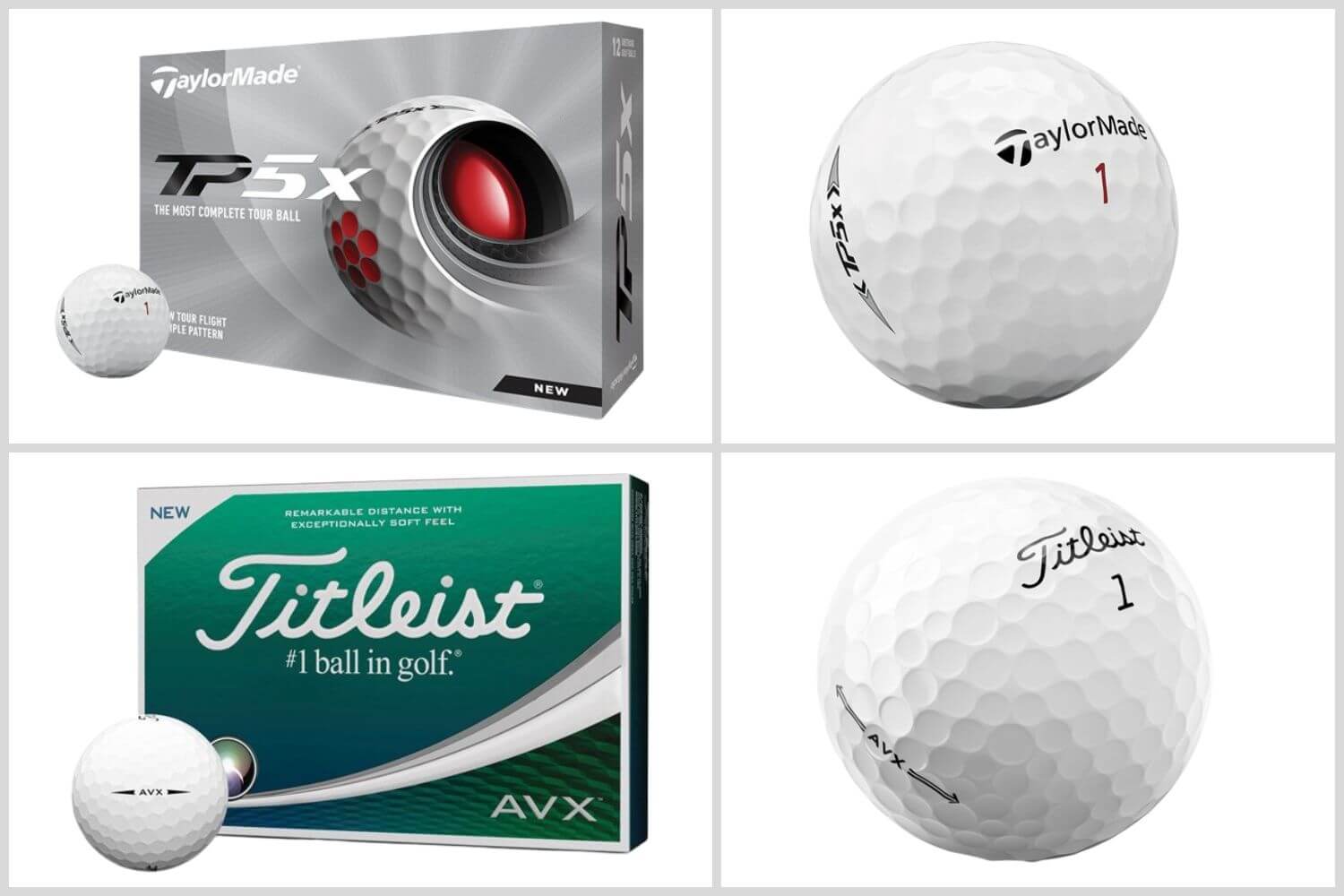
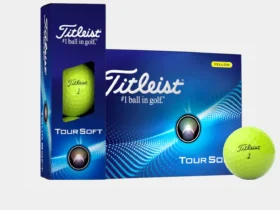
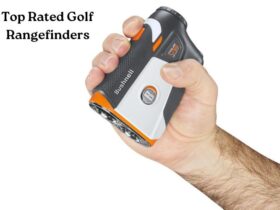
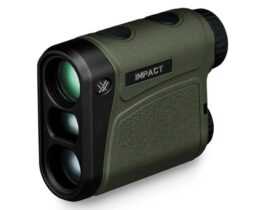


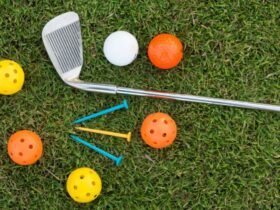
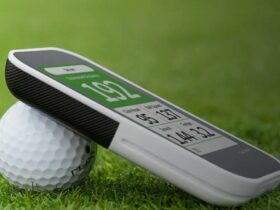
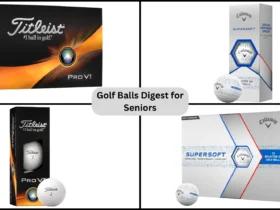

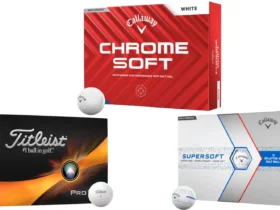
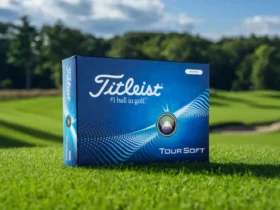
Leave a Reply